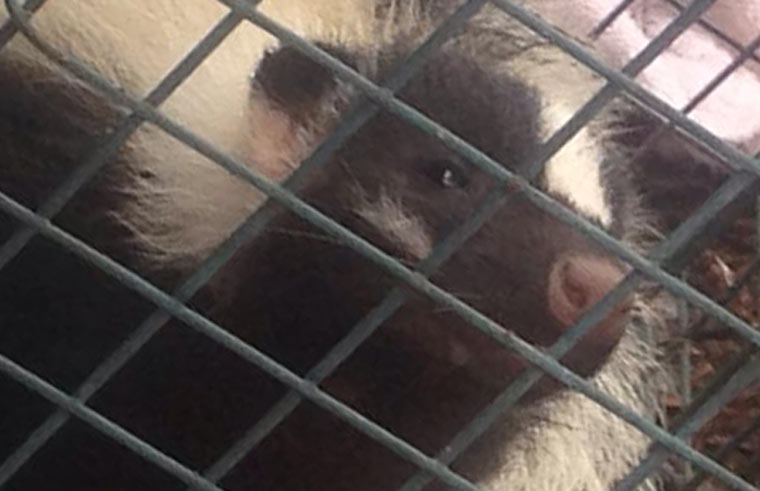-
info@aaanimalcontrol.com
Call us for help in your town
Humane Wildlife Education
Identifying skunk tracks
Need skunk removal in your hometown? We service over 500 USA locations! Click here to hire us in your town and check prices - updated for year 2020.
There is one guaranteed way that you’ll know a skunk has invaded your home or land. You’ll smell it. These critters are renowned for spraying a vile-smelling liquid around when they feel threatened, and coming across a human is enough to threaten the animal. It doesn't know that you're trying to help it along, just move it on its way. To the skunk you are just a bigger animal, and, therefore, a predator. It does have claws and teeth, but the animal would rather not use it. The biggest defense mechanism it has is the spraying one, and it works so well, there seems little point in evolving it into something else yet …

Skunks are easily identifiable because of their bold black and white markings, and this vile smell, but that's not all you have to go on when you are trying to trap them. Just like many other wild animals, skunks leave a mass of evidence in their wake. It won’t be long before you start spotting the little signs.
Skunk Damage
One of the hardest hit areas of your property will be your lawn. As much as they are well known for smelling very bad, skunks are also well known for digging. If you spot holes that are around 3 to 4 inches in diameter, there's a good chance they were caused by a skunk digging for bugs and beetles beneath the surface of the soil. These holes will usually be shaped like a cone, and they'll often come back even after you have filled them back in. You will need to get to the root of the problem - the skunk itself - and try to encourage it to move along. In order to do this, you’ll need to make slightly modifications to your land and buildings to make it tougher for animals just like skunks to stick around.
Skunk Paw Prints
Skunks have five toes on each paw, and the back prints, just like other wild critters, will be more elongated than the front ones. Skunk paw prints actually look very similar to those left by bears, just on a much smaller scale, and they are often mixed up with tracks left by certain squirrels, particularly larger tree squirrels and ground squirrels.
Skunk Scat
Droppings are a massive giveaway with any wild animal, and you can work out a lot of information by looking at the feces of the animal you’re sharing your home and/or garden with. Skunk scat can vary in appearance, but it will generally be about the same sized feces as what you would expect with the average, medium-sized domesticated cat. The surfaces of the droppings are usually smoother than other wild critters, however, and you can use the appearance to help you figure out what the animal is, if you didn't know already. Skunk droppings will usually be one to two inches in length, and about half an inch in diameter, and the food the animal is eating will determine how the droppings look, in terms of color. Those skunks who have eaten meat or animal products will often have droppings containing some of that animal matter still, including fur, feathers and even insects, and from plant matter, seeds can still sometimes be seen.
For more information, you may want to click on one of these guides that I wrote:
How much does skunk removal cost? - get the lowdown on prices.
How to get rid of skunks - my main skunk removal info guide.
Do skunks swim?


















